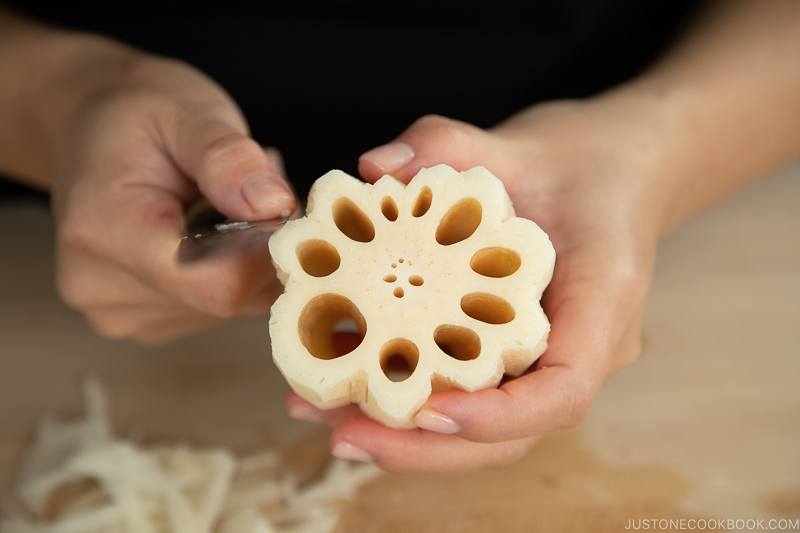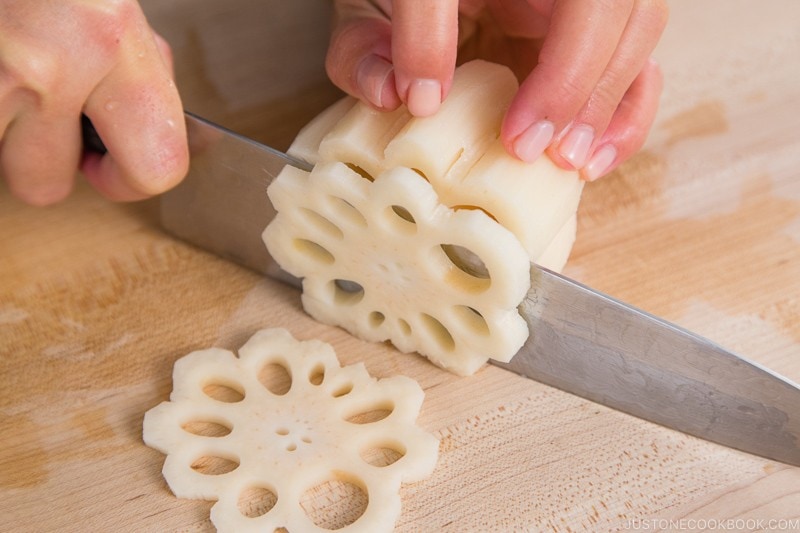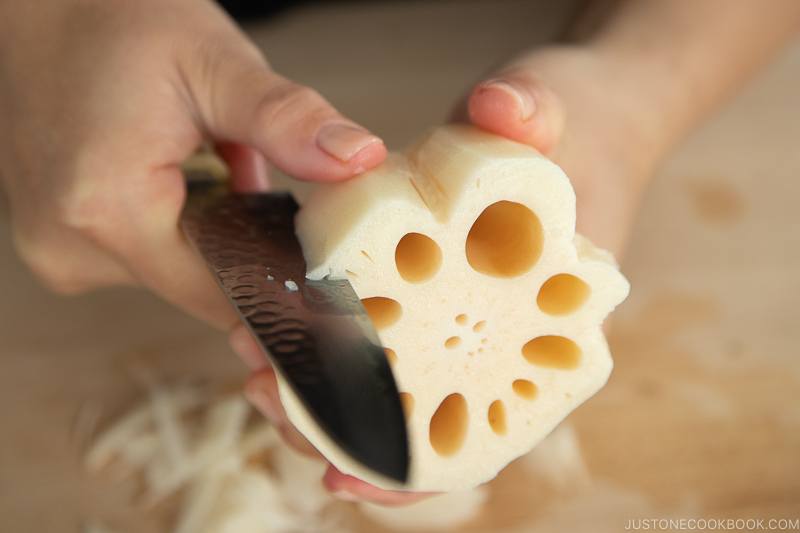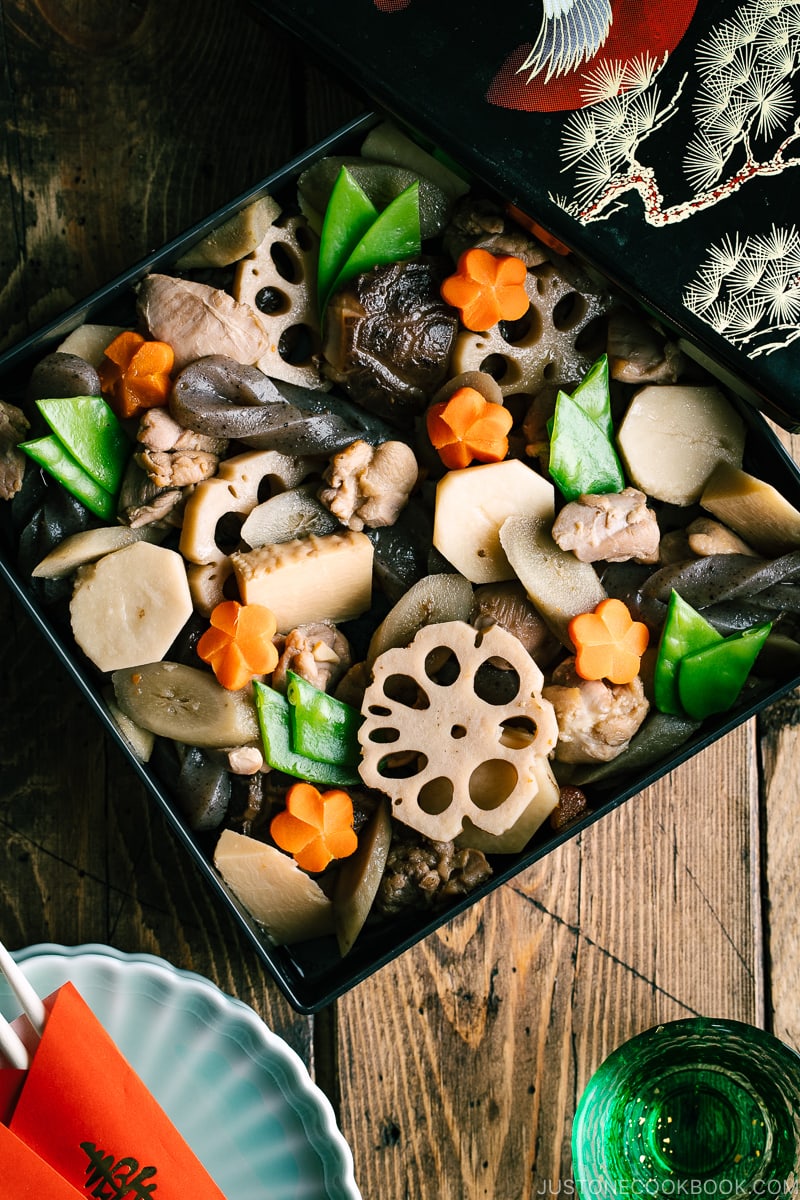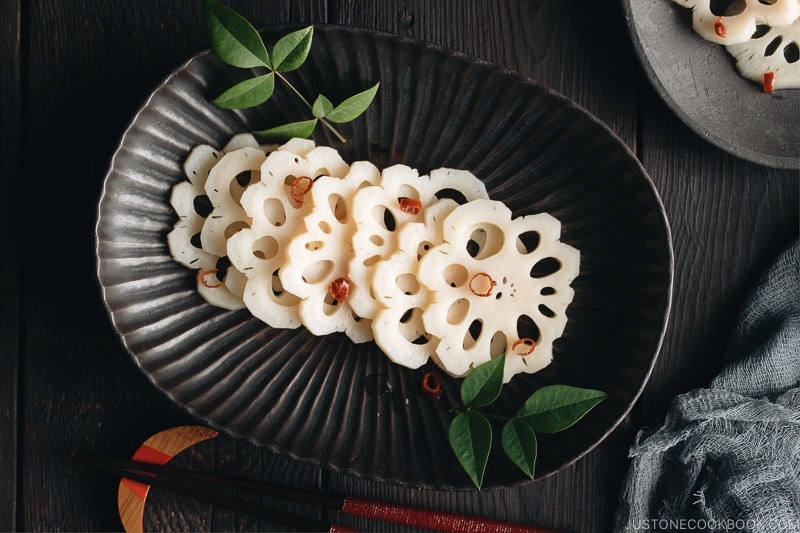What is Hana Renkon?
Hana renkon (花れんこん) is lotus root that’s that’s carved into a flower shape using a special Japanese cutting technique. We often cut ingredients into fancy shapes to dress up dishes to serve for Japanese New Year’s Osechi Ryori feast and other celebratory occasions. What is the significance of renkon? The holes of the lotus root are said to represent a clear and unobstructed future. The simmered vegetable stew called Chikuzenni (Nishime) includes hana renkon because of its auspicious symbolism. Other ingredients cut into auspicious and decorative shape include carrot, shiitake mushroom, and konnyaku.
How to Make Hana Renkon
Soak the lotus root slices for 5 minutes in a bowl of water with a splash of rice vinegar to prevent them from changing color and to remove the astringent taste.
How To Use Hana Renkon in Japanese Food
As I mentioned earlier, hana renkon is one of the auspicious vegetables in the Japanese dish chikuzenni. Also called nishime, it’s a traditional root vegetables and chicken stew that’s enjoyed in daily home cooking as well as auspicious occasions. Besides lotus root and chicken, nishime includes carrot, dried shiitake mushrooms, burdock root (gobo), konnyaku (konjac), bamboo shoots, and satoimo (Japanese taro). The ingredients are stir-fried in sesame oil and then simmered until tender in dashi stock seasoned with sugar, mirin, sake, kosher salt, and usukuchi (light-colored) soy sauce.
Hana Renkon in Japanese Recipes
Pickled Lotus Root (Su Renkon) Chirashi Sushi Temari Sushi Instant Pot Nishime Chikuzenni (Nishime)
